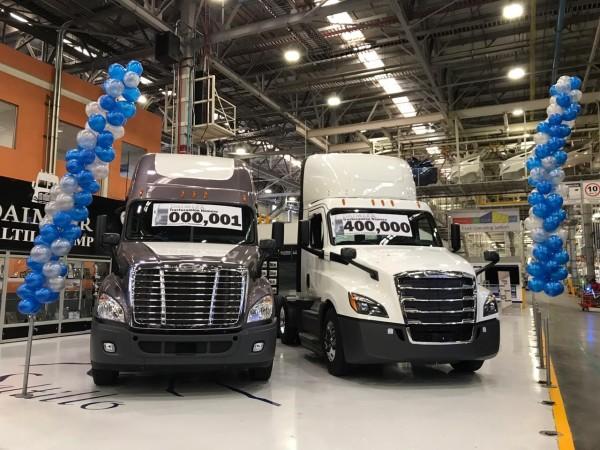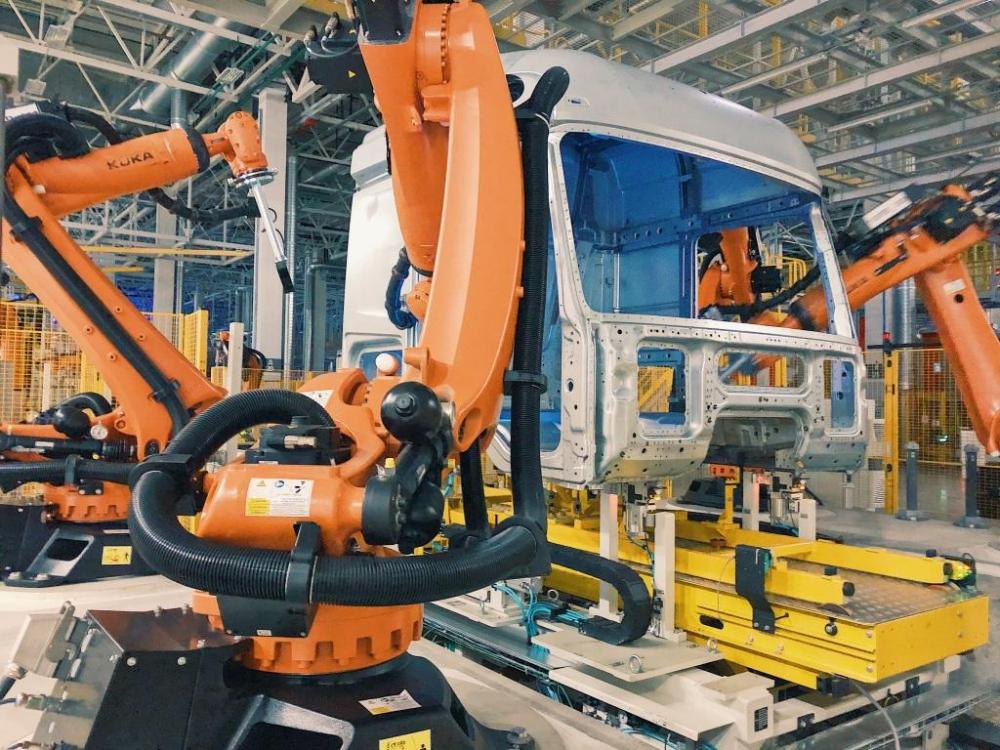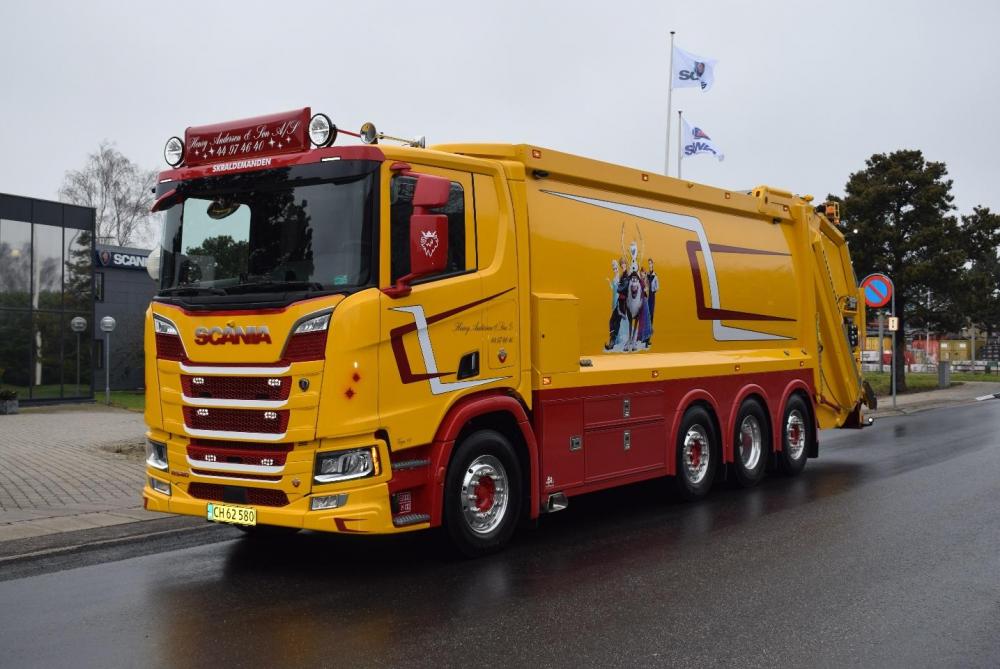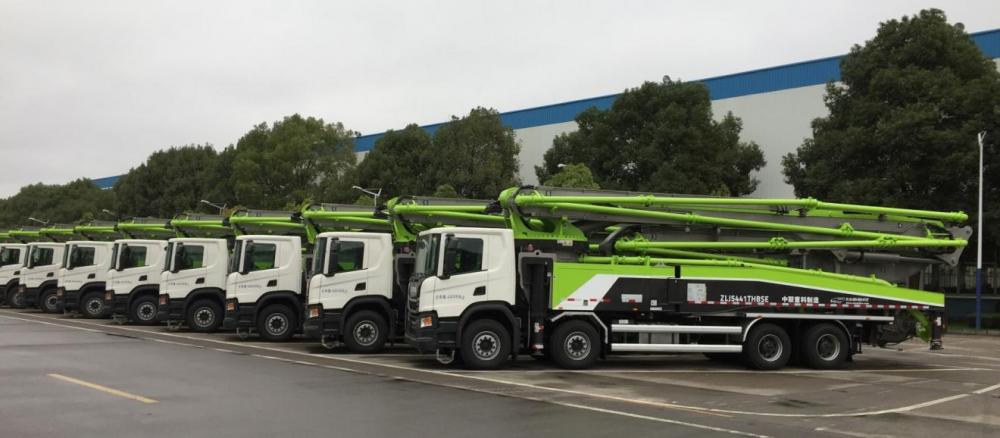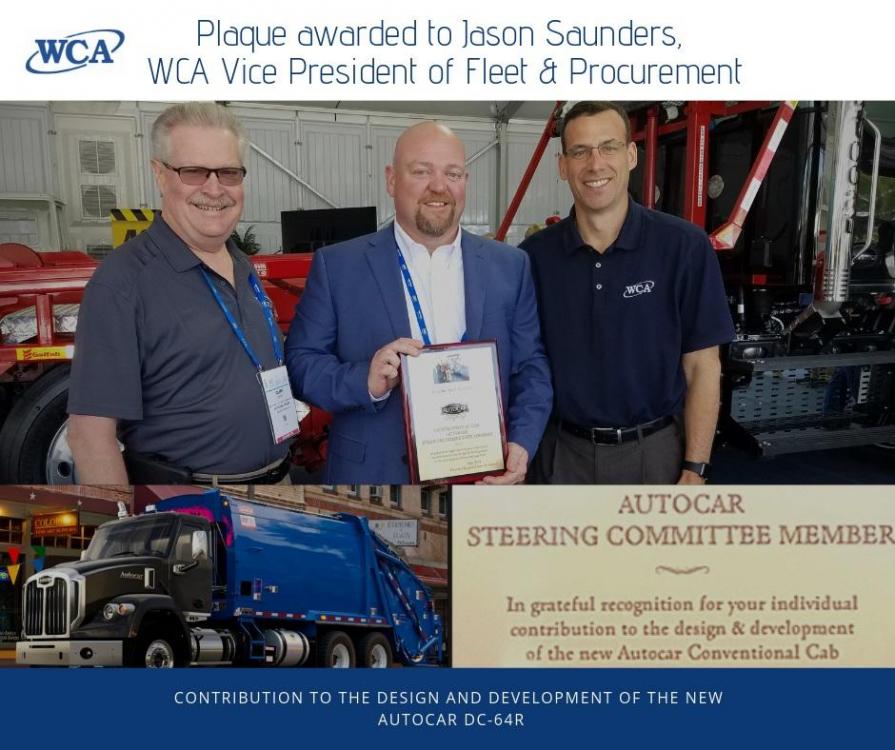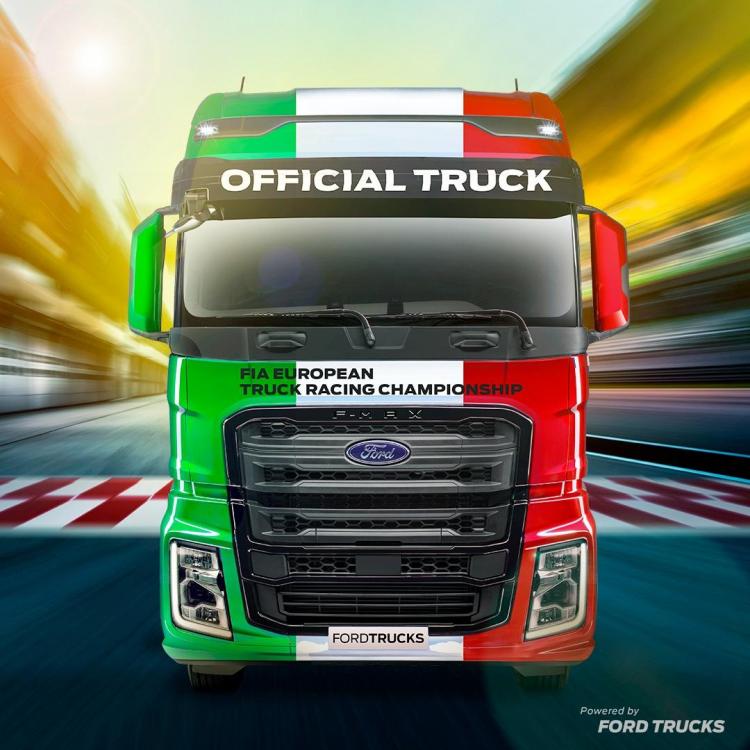
kscarbel2
Moderator-
Posts
18,550 -
Joined
-
Days Won
112
Content Type
Profiles
Forums
Gallery
Events
Blogs
BMT Wiki
Collections
Store
Everything posted by kscarbel2
-
Volvo Trucks - The three-point seat belt celebrates 60 years
kscarbel2 replied to kscarbel2's topic in Trucking News
Volvo engineer Nils Bohlin, inventor of the three-point seatbelt, had formerly worked at Saab's aircraft division on ejector seats design. Between cars and aircraft, Saab always impressed. -
Mexican truck plant produces 400,000th Freightliner
kscarbel2 replied to kscarbel2's topic in Trucking News
A Volvo with a Mack logo is not a Mack. If I ran US Inc., I would virtually require that all trucks be produced in the United States, the country market's size being easy justification. Any trucks produced in Mexico would be subject to a 25% tax. -
Truck News / May 27, 2019 SALTILLO, Mexico – Daimler’s Saltillo, Mexico, truck manufacturing plant celebrated its 10th anniversary recently, coinciding with the production of its 400,000th unit. A new Cascadia rolled off the line to mark the milestone, and the company held a celebration to honor the achievement. “We are so proud to celebrate the first 10 years of operation at Saltillo Truck Manufacturing Plant,” said Flavio Rivera, CEO of Daimler Trucks Mexico. “Our constant innovation has positioned us as a benchmark not only in Mexico, but the whole world. We are being recognized for our production and commercialization of trucks with the highest quality for the North American market.” The plant was opened in 2009 with a $300-million investment. .
-
Daimler Press Release / May 27, 2019 New plant in Naberezhnye Chelny (Tatarstan) is an important milestone for Joint Venture DAIMLER KAMAZ RUS (DK RUS) Cabin production in Chelny will be part of Mercedes-Benz global production network, close cooperation with Mercedes-Benz plant Wörth Investment of 200 Mio € to tap the potential of the Russian truck market and to underline cooperation with KAMAZ DAIMLER KAMAZ RUS creates up to 700 new jobs State-of-the-art facility: highly automated with more than 120 robots Stefan Buchner, Head of Mercedes-Benz Trucks worldwide: “We believe in the Russian market and its growth potential. The new cabin facility is another key element in our strategy to be close to our customers and to continuously strengthen our market presence around the globe. With it, we set a benchmark in the Russian market – to the benefit of both our customers and our Joint Venture partner KAMAZ. This plant is one of the most innovative facilities in the Russian automotive sector and the latest proof of our longstanding commitment to our Joint Venture DAIMLER KAMAZ RUS." Stuttgart / Naberezhnye Chelny - Today marks yet another milestone for DAIMLER KAMAZ RUS (DK RUS), the Joint Venture between Daimler Trucks and its Russian partner KAMAZ. Opening a brand new truck cabin production facility in Naberezhnye Chelny, Daimler Trucks and KAMAZ reach a new level in their technology partnership for the Russian market. The new facility covering 59,600 m2 will be an integral part of the global production network of Mercedes-Benz Trucks and will closely cooperate with the lead plant in Wörth. A major benefit of the new facility will be the further localization of truck cabins for both Mercedes-Benz and KAMAZ trucks, with more than 150 single components already localized at Russian suppliers. The cabins for the latest Mercedes-Benz Actros and Arocs models for the Russian market will be locally manufactured in the new production site. With an investment of 200 Mio €, the new state-of-the-art production facility creates up to 700 new jobs, bringing the local DK RUS work force to more than 1,000 employees. Following best practices exchange among Daimler Trucks global production experts, the new line serves as a lighthouse project to bring Daimler Trucks expertise to the Russian market. Stefan Buchner, Head of Mercedes-Benz Trucks worldwide: “We believe in the Russian market and its growth potential. The new cabin facility is another key element in our strategy to be close to our customers and to continuously strengthen our market presence around the globe. With it, we set a benchmark in the Russian market – to the benefit of both our customers and our joint venture partner KAMAZ. This plant is one of the most innovative facilities in the Russian automotive sector and the latest proof of our longstanding commitment to our joint venture DAIMLER KAMAZ RUS." As an undisputed leader in the commercial vehicle business, Daimler Trucks strongly benefits from its global market presence and intelligent use of common platforms adopted for local markets. As one of the largest commercial vehicle markets worldwide, Russia has a potential for continuous transportation demand and is therefore of key strategic importance for Daimler Trucks. Overall, Daimler Trucks is expecting modest but continued market growth over the coming years. Within the past 10 years, DK RUS assembled and sold more than 30,000 Mercedes-Benz and FUSO trucks in Naberezhnye Chelny for the Russian market. To celebrate the start of production in the new facility DK RUS today hosted an opening ceremony with Martin Daum, Member of the Board of Management Daimler AG and responsible for Daimler Trucks & Buses, Stefan Buchner, Head of Mercedes-Benz Trucks worldwide, and Sergej Kogogin, President & CEO KAMAZ. State-of-the-art production technology for Mercedes-Benz and KAMAZ trucks The new production facility has a total capacity of up to 55,000 units per year and is equipped to produce several cabin models for the Mercedes-Benz Actros and Arocs trucks model series for the Russian market as well as for KAMAZ heavy-duty products. With more than 120 robots and advanced camera measurement technology, it is one of the highest automated plants in Russia. Installing the equipment was an extraordinary task that took more than 500 trucks to transport it to Russia. Another highlight is the installation of innovative 3D-printer technology for plastic parts ensuring a quick and cost effective support of equipment maintenance. Introduction of such Industry 4.0 technology results in new job profiles that require extensive training of the new workforce in cooperation with KAMAZ and local universities and training institutes. Implementation of all these measures ensure that the latest updates of the Mercedes-Benz production system are applied and Daimler Trucks quality is assured. Successful Launch of new Mercedes-Benz Actros and Arocs trucks The new cabin production facility will be an integral part of the global Mercedes-Benz trucks production network and will closely cooperate with the lead plant in Wörth. The new site in Chelny serves as an important milestone in the strategic product roll out of the current portfolio of Mercedes-Benz heavy-duty trucks worldwide. In August 2018, DAIMLER KAMAZ RUS introduced the latest generation Mercedes-Benz Actros and Arocs to the Russian market, for which the facility will serve as cabin production site. In October 2018, the success of the launch culminated in the new Actros winning the prestigious Russian ‘Truck of the Year’ award. .
-
Scania Group Press Release / May 16, 2019 Danish Henry Andersen & Søn’s new refuse truck is certain to raise a few eyebrows along pickup routes. Owner Jais Andersen’s latest eyecatcher is a V8 Scania R 520 8×2 with a top-of-the-line Olympus compacting body. “Frankly, we don’t need a V8 for this work, they’re more apt for our crane trucks. But our drivers decide, and I follow their wishes,” says Jais Andersen. “I have several Scania vehicles in the company and they’re great trucks.” The refuse truck is additionally equipped with all the latest safety and comfort features, such as LED lighting, leather V8 seats and a 7-inch screen for the rear-view camera. It also has the Opticruise with clutch-on-demand for precise manoeuvring. The business was established back in 1968 by Jais’ father Henry. Jais started as a driver and a trained service technician. In 1990, the company was founded with Jais as managing director. He presently operates a sizeable fleet as well as a container rental and crane business. .
-
Volvo Trucks Press Release / May 27, 2019 The three-point seat belt – Volvo’s most important traffic safety innovation – is now celebrating 60 years. In that time, it has saved an estimated one million lives. Today, fastening a seat belt is still the simplest, fastest yet most important measures anyone can take to ensure their safety on the road. .
-
Scania Group Press Release / May 15, 2019 Scania has agreed with Zoomlion Concrete Machinery to deliver 170 vehicles for truck mounted pumps. This order is in addition to the 350 vehicles delivered earlier this year. “We have a long-standing collaboration with Zoomlion, the world-leading manufacturer of concrete machinery, dating back more than ten years,” says Alexander Vlaskamp, Head of Trucks at Scania. “It is certainly gratifying that our products are meeting the high standards demanded by Zoomlion.” The latest order is for 150 Scania P 450 8×4 trucks, for 56-metre pumps, and 20 Scania P 450 10×4 trucks for 62–67-metre pumps. Since the collaboration was first established in 2007, Scania has delivered 3,300 vehicles to the Chinese manufacturer with exceptional deliveries in 2012 of 1,350 vehicles. Zoomlion Heavy Industry Science and Technology Co, based in Changsha, Hunan Province, is one of the world’s largest construction machinery enterprises with a broad range of products for agricultural, construction, energy, environmental and transport applications. .
-
Renault Trucks Press Release / May 23, 2019 The driver's job in Africa is very challenging. Our drivers tell us how Renault Trucks K improves their comfort, their productivity and their safety every day . They are proud of their working tool. .
-
- 1
-

-
GM defense unit gets new leaders, stays quiet on plans Michael Wayland, Automotive News / May 25, 2019 DETROIT — General Motors' military-defense unit has a leadership team in place but remains in stealth mode a year and a half after being re-established by the automaker. Leading the GM Defense team is President David Albritton, a former U.S. Navy officer and communications specialist for the automaker. He replaced Charlie Freese, who returned to his role as head of GM's global fuel cell business in December. Freese had been leading GM Defense since its launch in October 2017, most recently with retired Maj. Gen. John Charlton, a 34-year U.S. Army veteran who left the company after six months. GM refused to comment on the departure of Charlton, who could not be reached for comment. Albritton and Freese refused requests for interviews. Aerospace, defense roles Albritton, 53, most recently was executive director of GM's internal and product-development communications. Before GM, he worked in communications in the aerospace and defense industries and spent nearly 10 years as a Navy public affairs officer. Since launching GM Defense, GM has been relatively quiet about the unit, but Albritton and his team are expected to be responsible for launching several hydrogen fuel cell-powered products for the aerospace and defense industries. GM, which sold its previous defense unit to General Dynamics Corp. for $1.1 billion in 2003, has worked with the U.S. military on the development of two fuel cell-powered products since 2016: an Unmanned Undersea Vehicle and a midsize pickup based on its Chevrolet Colorado called the ZH2. More recently, it has released concepts of a commercial-vehicle platform with autonomous capabilities and a military version of its Chevrolet Silverado HD as other potential future offerings. Both are powered by fuel cell systems. Bill Grotz, a company spokesman, declined to comment on the plans for such products as GM Defense is "refining" its business strategy. "We're not in a position to share details on our operations and plans going forward at this time," Grotz wrote in an email. "However, we'll have insight to share later this year and hopefully some nice business wins to discuss." Albritton, who joined GM's communications department in 2015, described his new position to PR Week as "exciting and daunting at the same time, as it's the first time in 25 years" he hasn't been in communications. Leadership appointments "What we're doing is leveraging our experience in electric vehicles, fuel-cell vehicles, high-voltage batteries, electric drive systems, autonomous vehicles, off-road mobility, and heavy truck manufacturing and offering those capabilities to militaries around the world," he told the magazine. Other GM Defense leadership appointments include: Nigel Sutton, 55, as vice president of business development on April 1. Sutton, a member of the Navy and U.S. Air Force for 23 years, had been vice president of international business for Northrop Grumman Innovation Systems. Jeff Ryder, 46, as vice president of growth and strategy on April 1. He most recently was vice president of Mobile Robotics at Oceaneering, an engineering services company, and has 25 years of experience across several industries, including aerospace and commercial technology. Angela Ambrose, 39, as vice president of government relations on May 1. She most recently led government relations activities for Accenture Federal Services since 2015 and previously worked for Northrop Grumman Aerospace Systems and in the public sector.
-
Fiat Chrysler puts merger offer to Renault board Reuters-Bloomberg / May 27, 2019 PARIS -- Fiat Chrysler Automobiles has made a "transformative merger" proposal to French peer Renault, FCA said on Monday. The deal would create an automaker with a strong presence across key regions, automotive markets and technologies, generating 5 billion euros ($5.6 billion) in annual savings, FCA said in a statement. The "broad and complementary brand portfolio would provide full market coverage, from luxury to mainstream," FCA said. Renault said in a statement Monday that its board had reviewed FCA's "friendly proposal" and had decided to "study with interest" the opportunity of such a business combination. The merger would bring FCA's brands such as Jeep, Chrysler, Alfa Romeo and Fiat under a common umbrella with Renault Group's Renault, Dacia and Lada brands. "The case for combination is also strengthened by the need to take bold decisions to capture at scale the opportunities created by the transformation of the auto industry," FCA said. The deal could take more than a year to finalize, FCA CEO Mike Manley told employees on Monday in a letter. The transaction will be structured as a 50-50 ownership through a Dutch holding company, FCA said, adding that it would give Renault investors an implied premium of about 10 percent. After payment of a 2.5 billion-euro ($2.8 billion) special dividend to FCA shareholders, each group would receive 50 percent of the combined entity in new stock. Exor, Fiat's founding Agnelli family holding, is set to become the single largest shareholder in the combined entity. The new company would be chaired by John Elkann, head of the Agnelli family that controls 29 percent of FCA, sources familiar with the deal talks told Reuters. Renault Chairman Jean-Dominique Senard would likely become CEO, one said. Renault and FCA had a combined market value of 32.6 billion euros ($36.5 billion) as of Friday. Milan-listed Fiat Chrysler shares jumped 19 percent in early trading, while Renault stock gained 17 percent. Renault and FCA built about 8.7 million cars last year, which would vault the pair past Hyundai Motor Group and General Motors. That’s still behind the world’s two biggest automakers, Volkswagen Group and Toyota Motor Corp., which both topped 10 million vehicles last year. Renault’s existing alliance, including numbers from partners Nissan and Mitsubishi, also reached this milestone. The merger would give Renault access to the North American market, while FCA would gain clout in Russia, the French carmaker’s second-biggest market with its AvtoVaz unit, which builds Ladas. National politics The merger plan faces political and workforce hurdles in Italy, and potentially also in France. Most of FCA's European plants are running below 50 percent capacity. FCA said the planned cost savings would not depend on factory closures. Pressure for consolidation among automakers has grown with the challenges posed by electrification, tightening emissions regulations and expensive new technologies being developed for connected and autonomous vehicles. “Fiat and Renault are looking for surer footing by gaining scale, and that’s not a bad idea for mass-market carmakers,” Bankhaus Metzler analyst Juergen Pieper said. “The execution of the deal is a significant hurdle. But on paper, this proposal looks good.” If successful, the tie-up could also have profound repercussions for Renault's 20-year-old alliance with Nissan, already weakened by the crisis surrounding the arrest and ouster of former Chairman Carlos Ghosn late last year. FCA and Renault have moved ahead without Nissan, the French automaker’s 20-year partner, which has resisted proposals by Renault to merge in a holding-company structure. Leadership changes Both FCA and Renault went through dramatic changes at the top last year after former FCA chief, Sergio Marchionne, died and Ghosn was arrested in Tokyo on charges of financial crimes. FCA-Renault, like almost every possible automotive pairing, had been studied intermittently for years by dealmakers. But the fractious relations between Ghosn and Marchionne made constructive merger talks impossible until after Marchionne's sudden death last July, banking sources said. The French government, Renault's biggest shareholder with a 15 percent stake, supports the merger in principle but will need to see more details, its main spokeswoman said on Monday. France will be "particularly vigilant regarding employment and industrial footprint," another Paris official said, adding that any deal must safeguard Renault's alliance with Nissan. Nissan, which is 43.4 percent-owned by Renault, would be invited to nominate a director to the 11-member board of the new combined company, under the plan presented on Monday. As alliance partners, Nissan and its affiliate Mitsubishi would benefit from an estimated 1 billion euros ($1.12 billion) in annual savings from the merger, FCA said. The Italian government may also seek a stake in the combined group to balance France's holding, a lawmaker from the ruling League party said on Monday. Anticipating such sensitivities, FCA stressed "new opportunities for employees of both companies" under the merger.
-
Crane Carrier Co. Press Release / May 22, 2019 Crane Carrier Company’s (CCC) leading lineup of Class 7 and 8 severe-duty chassis are purpose built to offer maximum durability, visibility and maneuverability – optimizing uptime, safety and overall performance. Built tough in the U.S. and backed by a network of more than 180 Certified CCC Dealers and Service Centers in North America, nothing endures like a Crane Carrier. .
-
Autocar Trucks Press Release / May 21, 2019 As a member of the Conventional Cab Autocar Steering Committee, a plaque was awarded to Houston, Texas-based WCA Waste Corporation* Vice President of Fleet & Procurement Jason Saunders in grateful recognition for his individual contribution to the design and development of the new Autocar DC-64R. WCA will be receiving the very first commercially produced unit in October 2019! * https://wcawaste.com/ .
-
I noticed very clearly that the key players in American truck industry journalism did NOT cover the launch of the Autocar DC-64R until days later. FYI, the big truckmakers, shall we say accommodate........journalists who write about (promote) their products. It's a dirty business.
-
Funny the way the mind works. I frequently remember one particular day when I was casually passed on the interstate by a customer's sharp looking ENDT865-powered F-model and hearing that distinctive V-8 throb, effortlessly pulling that tractor-trailer forward.
-
Ford Trucks F-MAX - Official Truck of FIA ETRC 2019
kscarbel2 replied to kscarbel2's topic in Trucking News
And they're off to Italy. Ciao! -
Ford Trucks International / May 24, 2019 The Ford Trucks F-MAX, "Official Truck" of FIA ETRC 2019, will be on the track at the first race of the championship in Misano, Italy on 25-26 May! .
-
"Truck Talk" (Talking the truck industry)
kscarbel2 replied to kscarbel2's topic in Other Truck Makes
This is how a truckmaker wastes their sales marketing budget. . -
BigMackTrucks.com
BigMackTrucks.com is a support forum for antique, classic and modern Mack Trucks! The forum is owned and maintained by Watt's Truck Center, Inc. an independent, full service Mack dealer. The forums are not affiliated with Mack Trucks, Inc.
Our Vendors and Advertisers
Thank you for your support!

